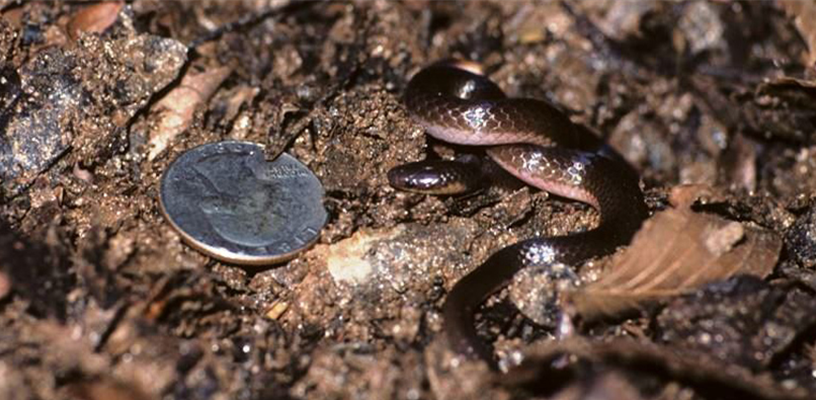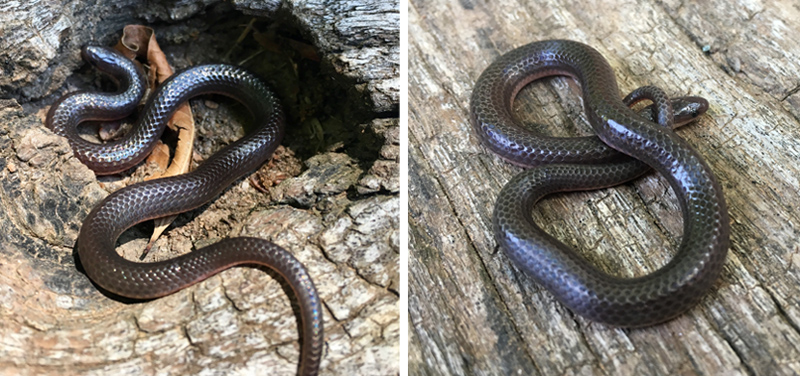
- By Phyllis Smith
- Posted Friday, June 7, 2019
Is it a Worm, or is it a Snake?
The worm snake, (Carphophis amoenus), is so small that at first glance one might mistake it for an earthworm, but look closely to see a body covered in dry scales and a small head with two noticeable eyes, traits not seen in earthworms. Take another look to see that the worm snake is two-toned, displaying brown on the top with a pink underside. Like most snakes in North Carolina, worm snakes are nonvenomous. When threatened they do not use bite but may wiggle around wildly before attempting to go undercover. They seek food and shelter in leaf litter, rotting logs, or by burrowing into the soil where they seek out earthworms as a primary food source, along with insect larvae and slugs. Although common throughout the state, worm snakes are seldom seen in the wild due to their secretive nature. They are sometimes encountered when digging in mulch or compost. When this happens stop and appreciate the opportunity to catch a rare glimpse of this diminutive reptile.

For further details on all North Carolina snakes visit the Amphibians and Reptiles of North Carolina website, maintained by the Davidson College Herpetology Lab and click on any “Snakes” thumbnail.
N.C. State University Extension offers the publication Reptiles and Amphibians in Your Backyard. Download here, or drop by the Forsyth County Center of N.C. Cooperative Extension at 1450 Fairchild Road in Winston-Salem to pick up a free copy.
Source: Dorcas, D. (2005). A Guide to Snakes of North Carolina. Davidson College Herpetology Lab, Davidson, N.C.






